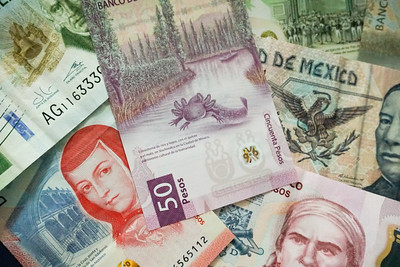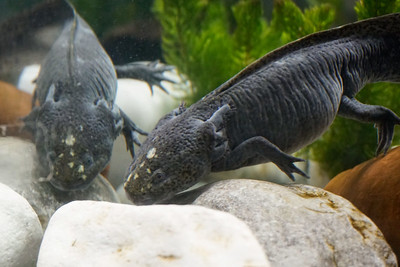
PREV ARTICLE
NEXT ARTICLE
FULL ISSUE
PREV FULL ISSUE
V25 2022 INDEX E-SYLUM ARCHIVE MEXICAN BANKNOTE'S ENDANGERED SALAMANDERAn endangered salamander pictured on a recent Mexican banknote has generated great interest. -Editor
While the reverse of the old 50-peso bill featured the famed Morelia aqueduct and monarch butterflies, the new note depicts the axolotl in its natural habitat, among the chinampas and ahuejote trees, a willow species native to Mexico. The decision to feature an axolotl — which many people believe is an axolotl named Gorda, although Banco de México clarified that it used various images for reference — has shone a spotlight on decadeslong efforts to rehabilitate the species. The bill received the International Bank Note Society's 2021 Bank Note of the Year Award and has caught local imagination to such an extent that online sellers are offering it for as much as 500,000 pesos (approximately $25,000). Rocío Espinoza de los Monteros, a curator at Mexico's Numismatic Society, a collective devoted to studying currency, says people are collecting the bill rather than spending it due to perceived scarcity, although the note is currently in circulation.
Paola Vargas, 26, one of the visitors at the Museo del Ajolote, waited with her young son for over 30 minutes to enter the museum.
Georgina Ruiz, 48, visited the museum with her spouse and children. Luis Zambrano, a researcher at the Institute of Biology at the National Autonomous University of Mexico, has studied axolotls for 14 years. Since the rollout of the new note, many have approached him to learn more about the species. A woman in Barcelona, Spain, emailed him, requesting he talk about salamanders at her son's school; a German couple asked him to accompany them to Xochimilco to meet the creatures.
His team has also begun receiving donations from children.
To read the complete article, see:
Wayne Homren, Editor The Numismatic Bibliomania Society is a non-profit organization promoting numismatic literature. See our web site at coinbooks.org. To submit items for publication in The E-Sylum, write to the Editor at this address: whomren@gmail.com To subscribe go to: https://my.binhost.com/lists/listinfo/esylum All Rights Reserved. NBS Home Page Contact the NBS webmaster 
|


